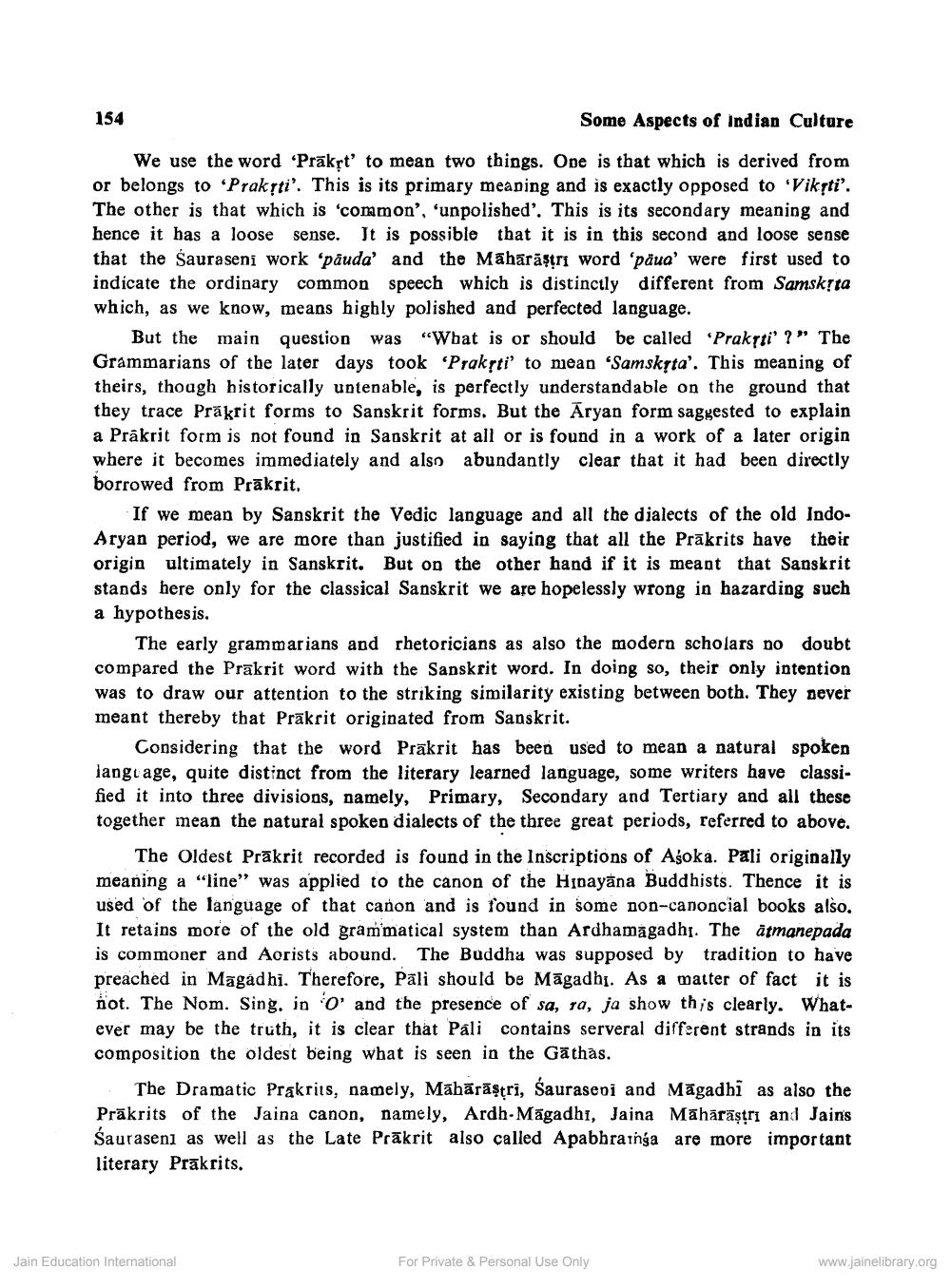________________
154
Some Aspects of Indian Culture
We use the word 'Prākrt' to mean two things. One is that which is derived from or belongs to 'Praksti'. This is its primary meaning and is exactly opposed to 'Viksti'. The other is that which is 'common', 'unpolished'. This is its secondary meaning and hence it has a loose sense. It is possible that it is in this second and loose sense that the Sauraseni work 'pauda' and the Māhārāştri word 'paua' were first used to indicate the ordinary common speech which is distinctly different from Samsksta which, as we know, means highly polished and perfected language.
But the main question was “Wbat is or should be called 'Prakrti'?” The Grammarians of the later days took 'Prakti' to mean "Samsksta'. This meaning of theirs, though historically untenable, is perfectly understandable on the ground that they trace Prakrit forms to Sanskrit forms. But the Aryan form saggested to explain a Prakrit form is not found in Sanskrit at all or is found in a work of a later origin where it becomes immediately and also abundantly clear that it had been directly borrowed from Prakrit.
If we mean by Sanskrit the Vedic language and all the dialects of the old IndoAryan period, we are more than justified in saying that all the Prākrits have their origin ultimately in Sanskrit. But on the other hand if it is meant that Sanskrit stands here only for the classical Sanskrit we are hopelessly wrong in hazarding sueh a hypothesis.
The early grammarians and rhetoricians as also the modern scholars no doubt compared the Prakrit word with the Sanskrit word. In doing so, their only intention was to draw our attention to the striking similarity existing between both. They never meant thereby that Prākrit originated from Sanskrit.
Considering that the word Prakrit has been used to mean a natural spoken language, quite distinct from the literary learned language, some writers have classified it into three divisions, namely, Primary, Secondary and Tertiary and all these together mean the natural spoken dialects of the three great periods, referred to above.
The Oldest Prakrit recorded is found in the Inscriptions of Asoka. Pali originally meaning a “line" was applied to the canon of the Hidayāna Buddhists. Thence it is used of the language of that canon and is found in some non-canoncial books also. It retains more of the old grammatical system than Ardhamagadhi. The atmanepada is commoner and Aorists abound. The Buddha was supposed by tradition to have preached in Magadhi. Therefore, Pāli should be Māgadhi. As a matter of fact it is not. The Nom. sing. in o' and the presence of sa, ra, ja show this clearly. Whatever may be the truth, it is clear that Pali contains serveral different strands in its composition the oldest being what is seen in the Gāthas.
The Dramatic Prakrits, namely, Māhārāsțri, Sauraseoi and Māgadbi as also the Prākrits of the Jaina canon, namely, Ardh-Māgadhi, Jaina Mahārāștri and Jains Sauraseni as well as the Late Prākrit also called Apabbrainga are more important literary Prakrits.
Jain Education International
For Private & Personal Use Only
www.jainelibrary.org




